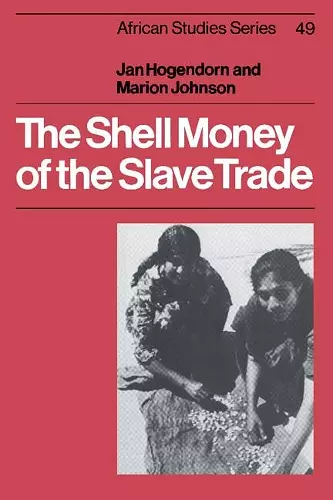The Shell Money of the Slave Trade
Marion Johnson author Jan Hogendorn author
Format:Paperback
Publisher:Cambridge University Press
Published:18th Sep '03
Currently unavailable, and unfortunately no date known when it will be back

A study of the role of cowrie-shell money in West African trade, particularly the slave trade.
This study examines the role of cowrie-shell money in West African trade, particularly the slave trade. Over a large part of West Africa they became the regular market currency, but then disappeared almost totally, except during the depression of the 1930s, and occasionally in the markets of remote frontier districts.This study examines the role of cowrie-shell money in West African trade, particularly the slave trade. The shells were carried from the Maldives to the Mediterranean by Arab traders for further transport across the Sahara, and to Europe by competing Portuguese, Dutch, English and French traders for onward transport to the West African coast. In Africa they served to purchase the slaves exported to the New World, as well as other less sinister exports. Over a large part of West Africa they became the regular market currency, but were severely devalued by the importation of thousands of tons of the cheaper Zanzibar cowries. Colonial governments disliked cowries because of the inflation and encouraged their replacement by low-value coins. They disappeared almost totally, to re-appear during the depression of the 1930s, and have been found occasionally in the markets of remote frontier districts, avoiding exchange and currency control problems.
ISBN: 9780521541107
Dimensions: 229mm x 153mm x 17mm
Weight: 390g
248 pages